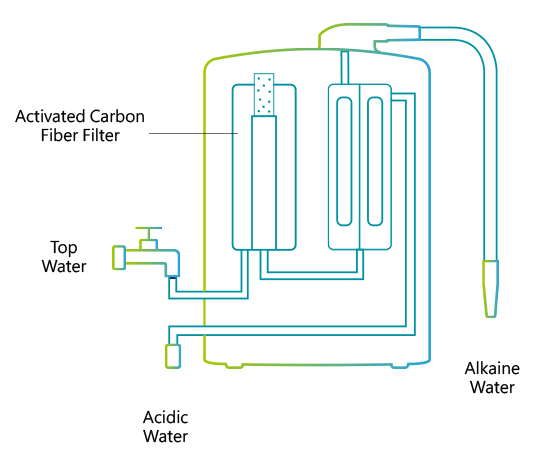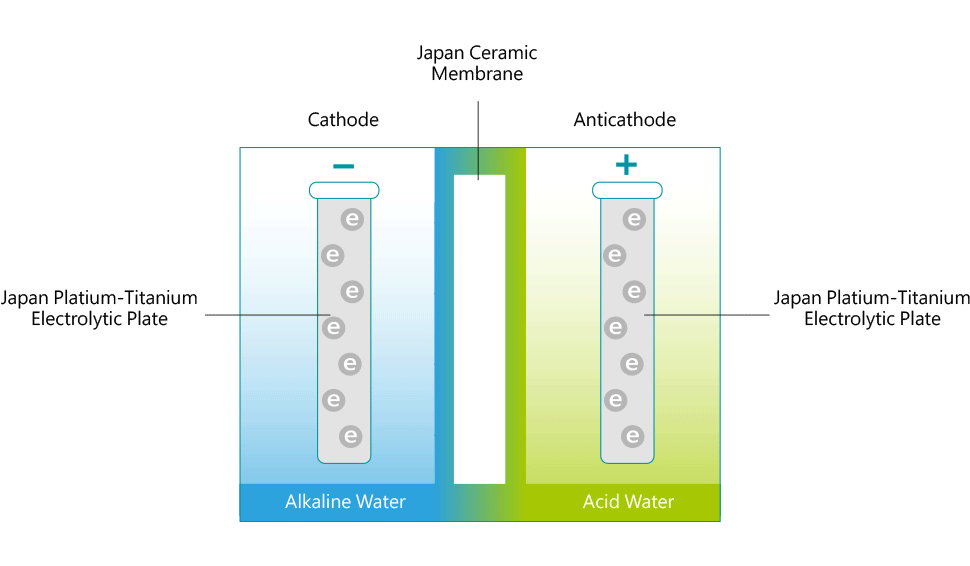IonTech water ionizer electrolyzes water with direct current voltage (DCV). Water is first filtered through activated charcoal. Next water passes through specially engineered electrolysis chamber equipped with platinum-coated charged titanium electrolysis plates. As the water flows, the water is ‘Ionized’ by the electrical charge from the titanium plates. The conditioned or ‘Ionized’ water then exits through two ports; (an alkaline port and an acidic port).

The (-) cathode attracts minerals such as sodium, magnesium, potassium, calcium and others and the water surrounding the terminal becomes alkaline with an increase in hydrogen ions (H+). The anti-cathode terminal attracts ions such as oxygen, sulfuric acid, sulfur and the water surrounding the terminal becomes acidic with an increase in hydroxide ions (OH-). The water discharged from the alkaline port has a higher pH value and contains minerals, like Calcium and Magnesium, that are in a form that is more suitable for the body to assimilate.

Calcium, Potassium, Magnesium and other minerals can normally be found in drinking water. But these minerals in are complex, inorganic and very stable. These are not easily assimilated by the body. However, minerals in ionized water are separated into ions with (-)ORP. These ions unite with the acidic residues with positive ions. They act as buffering agents that are easily assimilated and eliminated by our bodies.